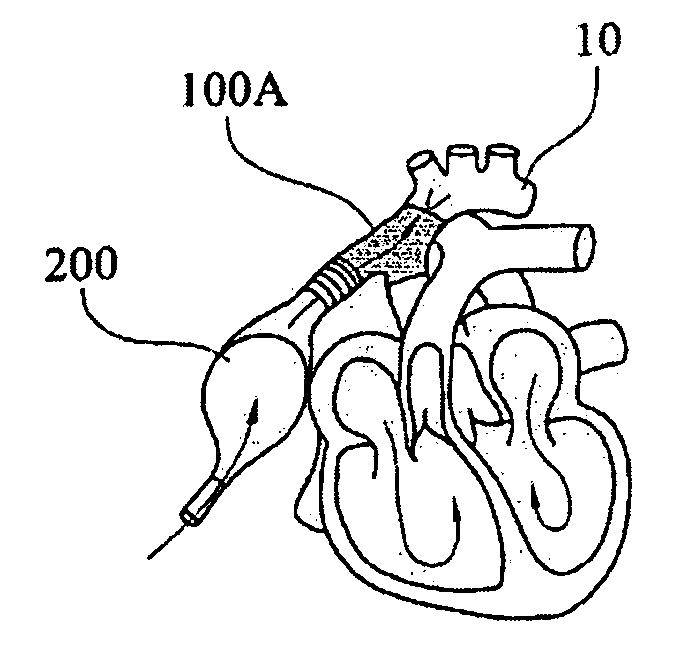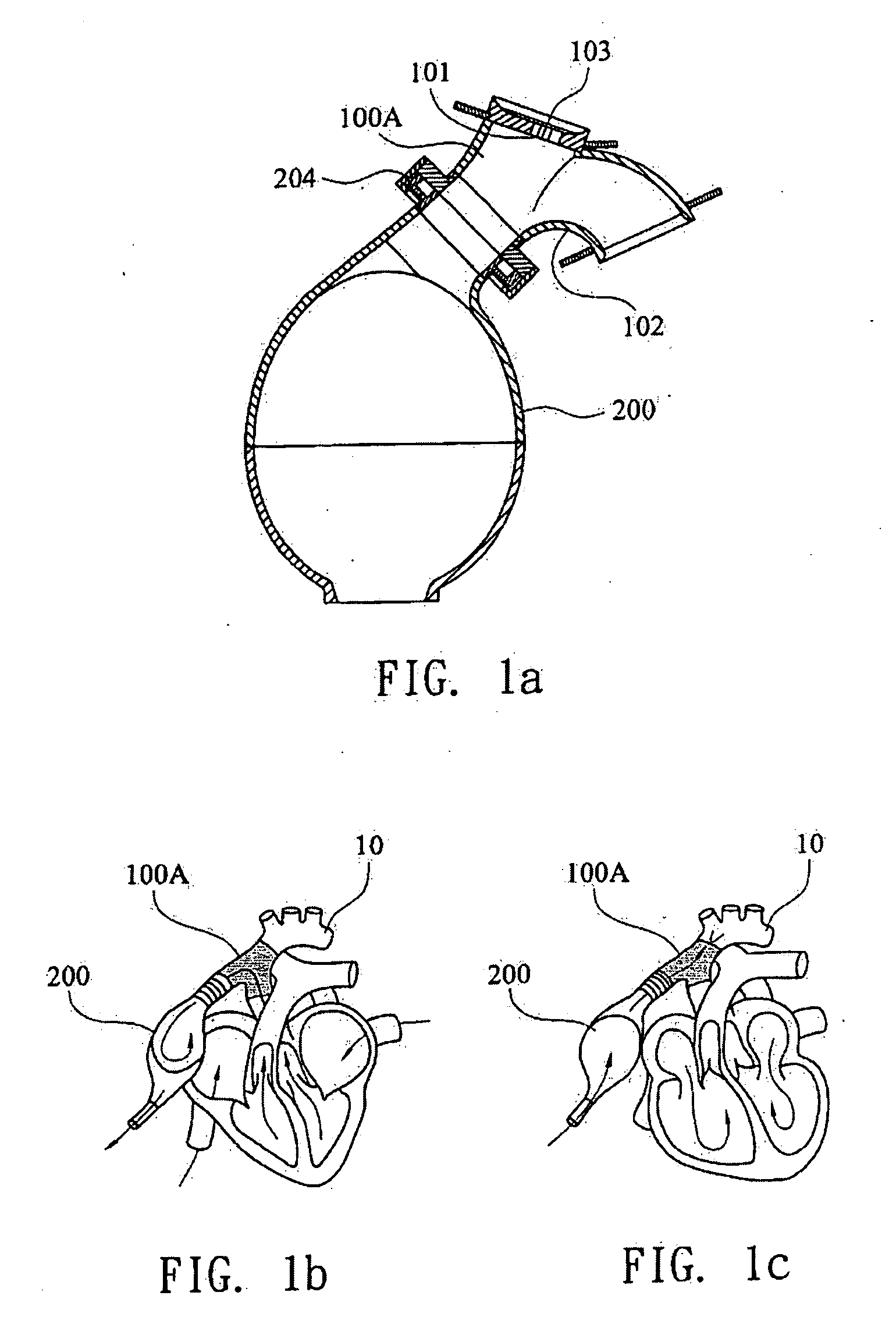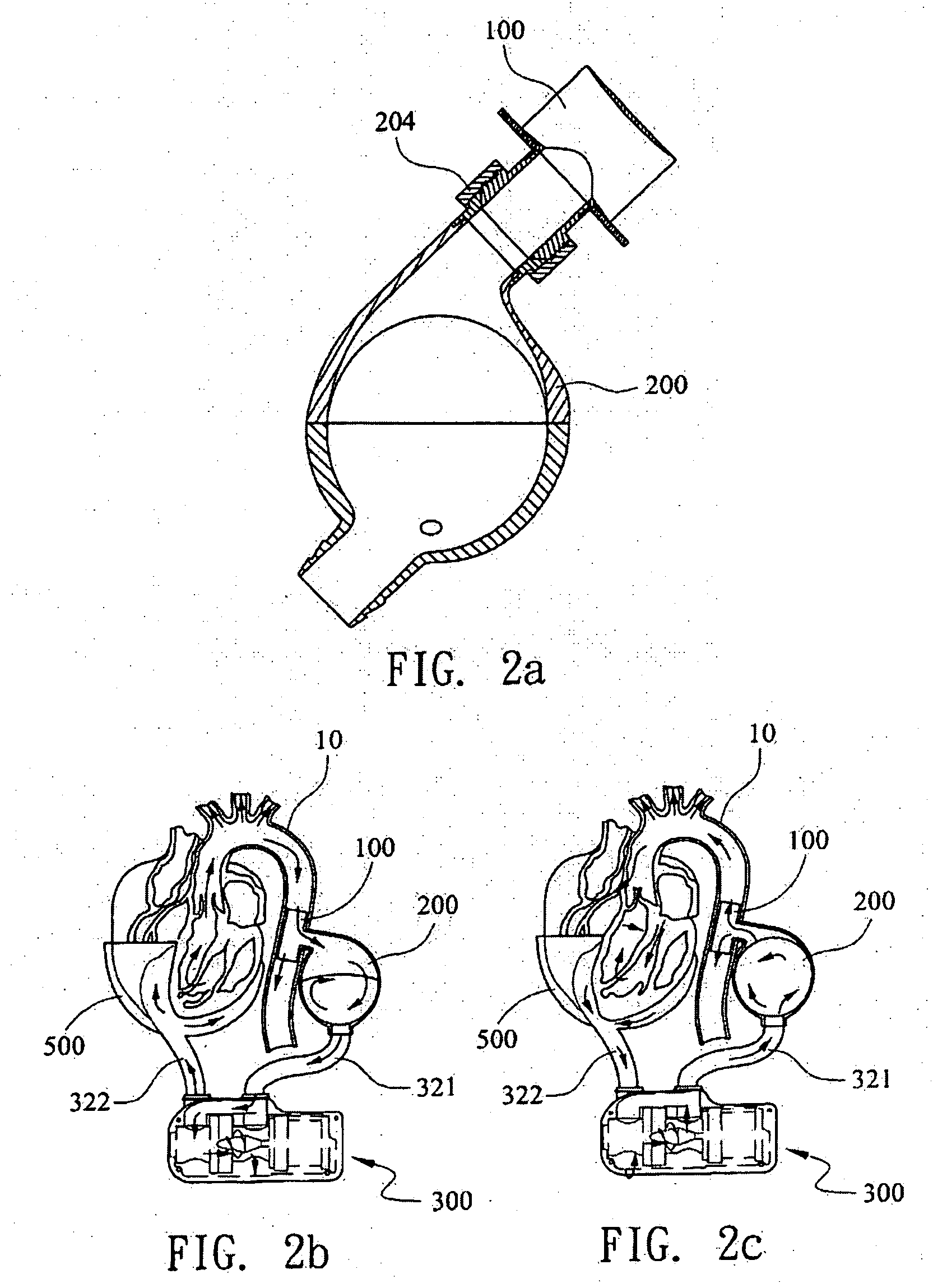Ventricular Assist Device
a technology of ventricular assist and ventricular valve, which is applied in the field of ventricular assist devices, can solve the problems of shortage of donors, limited cardiac transplantation, and consumption of about 1% of the national health care resources
- Summary
- Abstract
- Description
- Claims
- Application Information
AI Technical Summary
Benefits of technology
Problems solved by technology
Method used
Image
Examples
Embodiment Construction
Dual-Pulsation Design Concept
[0050]The design of an integrated co- and counter-pulsation bi-ventricular assist device proposes in the following several novel design features which will improve the aforementioned inadequacies existing in the contemporary LVAD designs. Basically, the adoption of the pulsatile: pumping approach is based on two; major considerations including: 1) the implanted device functions compatibly with the human physiology; and 2) the long-term patency is guaranteed which assures both operational safety and quality of life for the patients. Pulsatile circulation assist is much physiologically compatible, and in order not to induce long-term complications, in particular, in end organ micro-circulation and neurohormonal regulation, it is logically more sensible to consider pulsatile circulatory support. Owing to the fact that pulsatile devices are non-obligatory, it is safer for patients to survive by their own native heart function when unexpected pump malfunction...
PUM
 Login to View More
Login to View More Abstract
Description
Claims
Application Information
 Login to View More
Login to View More - R&D
- Intellectual Property
- Life Sciences
- Materials
- Tech Scout
- Unparalleled Data Quality
- Higher Quality Content
- 60% Fewer Hallucinations
Browse by: Latest US Patents, China's latest patents, Technical Efficacy Thesaurus, Application Domain, Technology Topic, Popular Technical Reports.
© 2025 PatSnap. All rights reserved.Legal|Privacy policy|Modern Slavery Act Transparency Statement|Sitemap|About US| Contact US: help@patsnap.com



